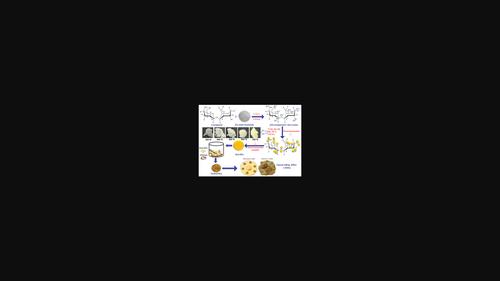Green Chemical Approach for the Synthesis of ZnO Nanoparticles and Investigation of their Cytotoxicity
IF 2.7
4区 材料科学
Q3 CHEMISTRY, PHYSICAL
引用次数: 0
Abstract
In this study, zinc oxide nanoparticles (ZnO-NPs) are synthesized and combined with chitosan (Cs) to create Cs/ZnO-NPs nanomicelles, aiming to investigate their potential as a novel cancer treatment. The ZnO-NPs are produced through a sintering process at temperatures ranging from 300 to 700 °C. The most effective nanoparticles are obtained at 600 °C, as determined by X-ray diffraction (XRD) and Fourier-transform infrared spectroscopy (FTIR) analyses, which confirmed their crystallinity and purity. Transmission electron microscopy (TEM) and scanning electron microscopy (SEM) are employed to characterize the size and shape of the nanoparticles, revealing predominantly spherical and hexagonal structures with stable dimensions. The cytotoxic effects of the Cs/ZnO-NPs are evaluated against various cancer cell types. The results show that at a concentration of 125 µg mL−1, the Cs/ZnO-NPs demonstrate significantly higher cancer cell toxicity compared to ZnO-NPs alone, while remaining non-toxic to normal cells. This indicates that Cs/ZnO-NPs have a superior ability to selectively target cancer cells. These findings suggest that Cs/ZnO-NPs nanomicelles hold promise as an effective and safe nanotherapeutic approach in the realm of cancer treatment, meriting further exploration for clinical applications.

用绿色化学方法合成氧化锌纳米粒子并研究其细胞毒性
本研究合成了氧化锌纳米粒子(ZnO-NPs),并将其与壳聚糖(Cs)结合制成 Cs/ZnO-NPs 纳米微球,旨在研究其作为新型癌症治疗方法的潜力。ZnO-NPs 是在 300 至 700 °C 的温度下通过烧结工艺制得的。经 X 射线衍射(XRD)和傅立叶变换红外光谱(FTIR)分析确定,在 600 °C 时获得的纳米粒子效果最好,这证实了它们的结晶度和纯度。透射电子显微镜(TEM)和扫描电子显微镜(SEM)用于表征纳米粒子的尺寸和形状,结果显示它们主要呈尺寸稳定的球形和六边形结构。评估了 Cs/ZnO-NPs 对各种癌症细胞的细胞毒性作用。结果表明,在 125 µg mL-1 的浓度下,Cs/ZnO-NPs 的癌细胞毒性明显高于单独的 ZnO-NPs,而对正常细胞则无毒性。这表明 Cs/ZnO-NPs 具有更强的选择性靶向癌细胞的能力。这些研究结果表明,Cs/ZnO-NPs 纳米微孔有望成为癌症治疗领域一种有效、安全的纳米治疗方法,值得进一步探索其临床应用。
本文章由计算机程序翻译,如有差异,请以英文原文为准。
求助全文
约1分钟内获得全文
求助全文
来源期刊

Particle & Particle Systems Characterization
工程技术-材料科学:表征与测试
CiteScore
5.50
自引率
0.00%
发文量
114
审稿时长
3.0 months
期刊介绍:
Particle & Particle Systems Characterization is an international, peer-reviewed, interdisciplinary journal focusing on all aspects of particle research. The journal joined the Advanced Materials family of journals in 2013. Particle has an impact factor of 4.194 (2018 Journal Impact Factor, Journal Citation Reports (Clarivate Analytics, 2019)).
Topics covered include the synthesis, characterization, and application of particles in a variety of systems and devices.
Particle covers nanotubes, fullerenes, micelles and alloy clusters, organic and inorganic materials, polymers, quantum dots, 2D materials, proteins, and other molecular biological systems.
Particle Systems include those in biomedicine, catalysis, energy-storage materials, environmental science, micro/nano-electromechanical systems, micro/nano-fluidics, molecular electronics, photonics, sensing, and others.
Characterization methods include microscopy, spectroscopy, electrochemical, diffraction, magnetic, and scattering techniques.
 求助内容:
求助内容: 应助结果提醒方式:
应助结果提醒方式:


